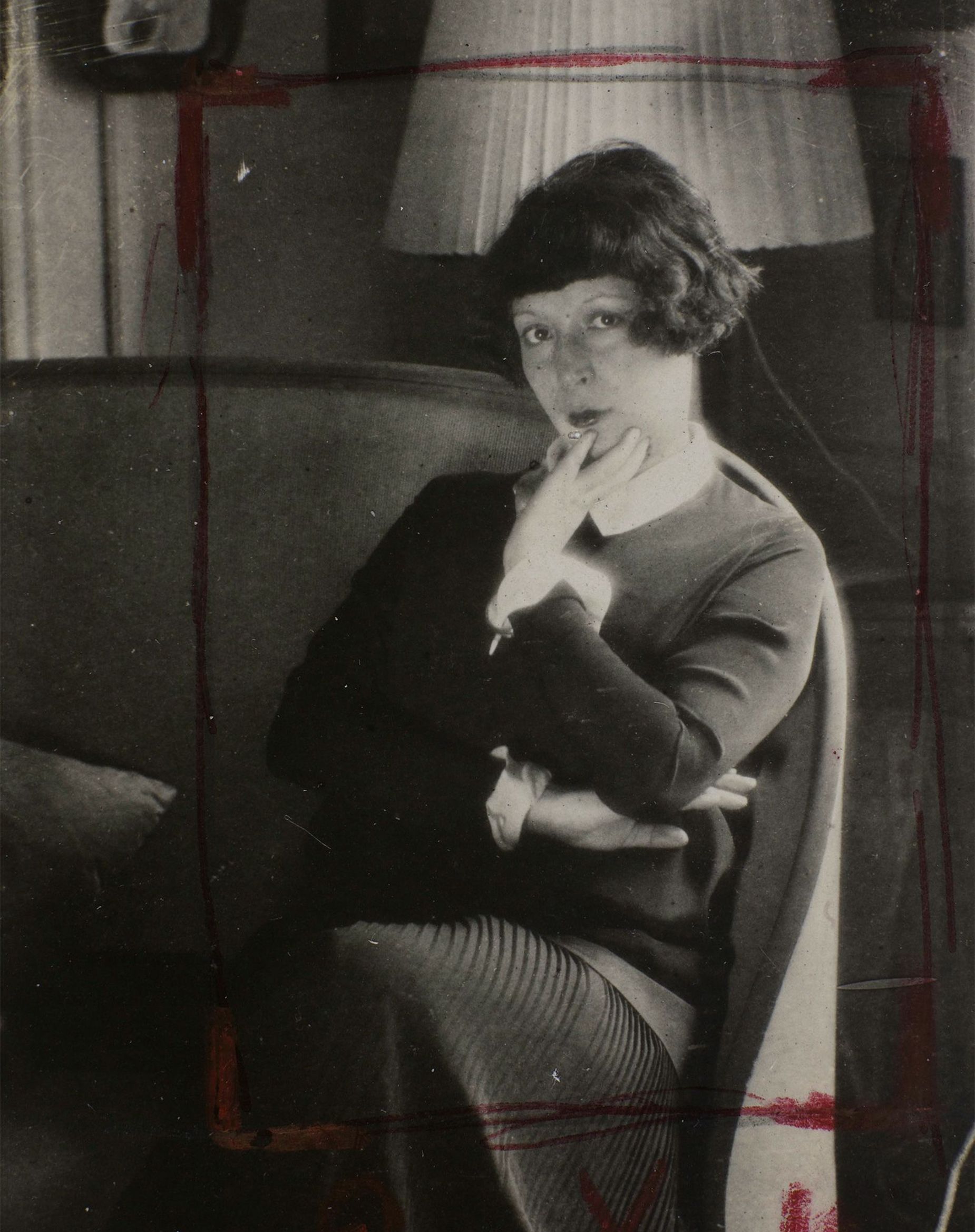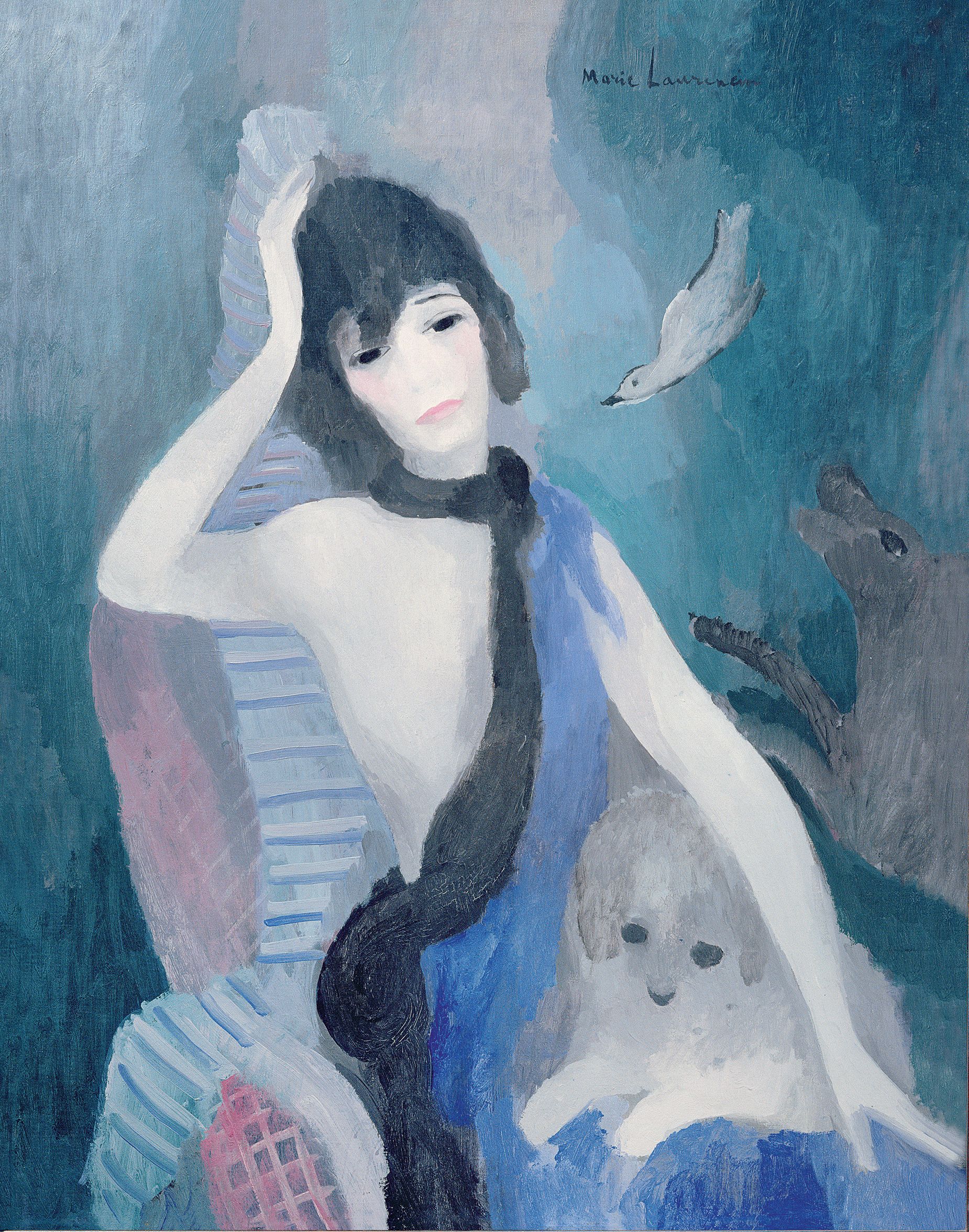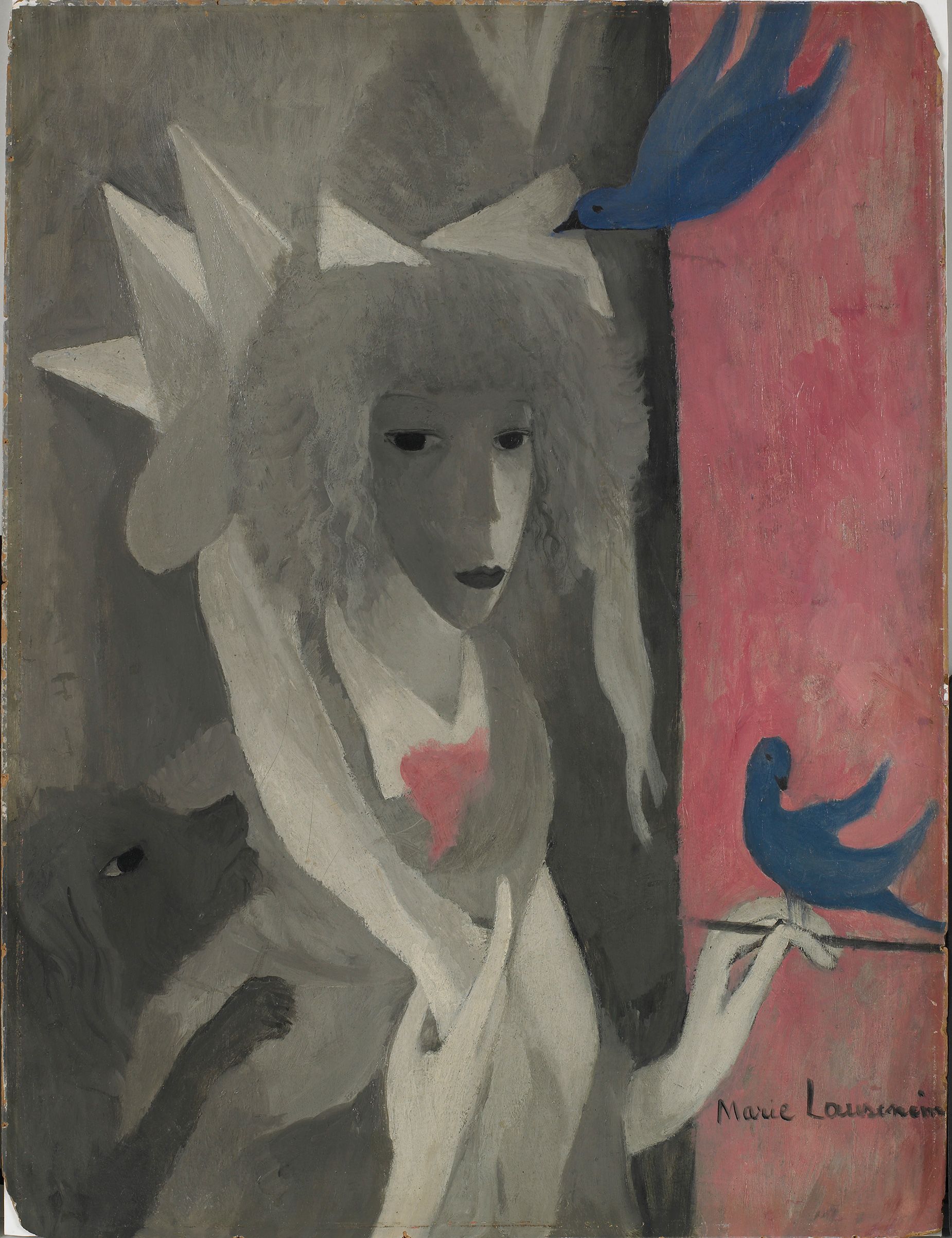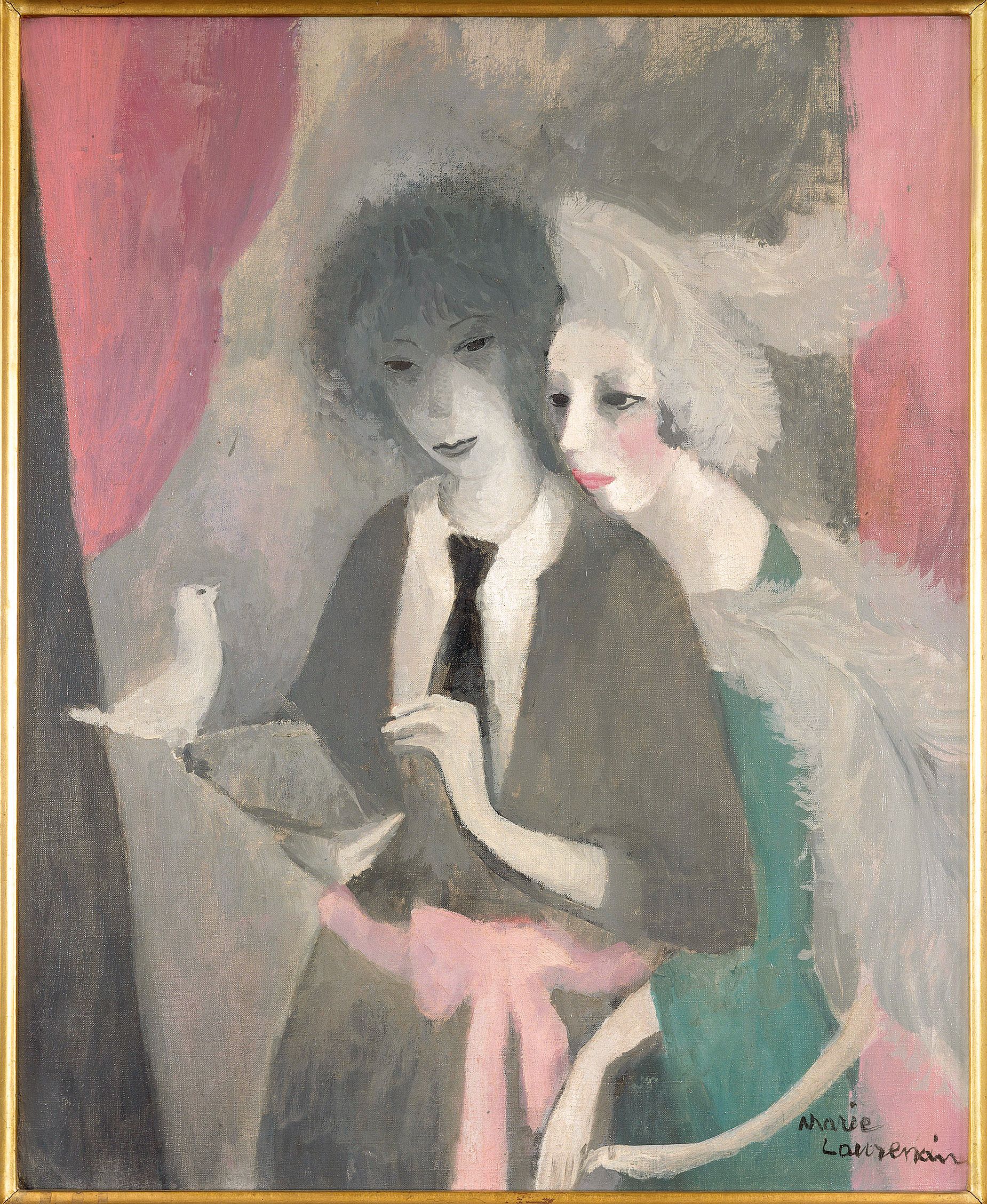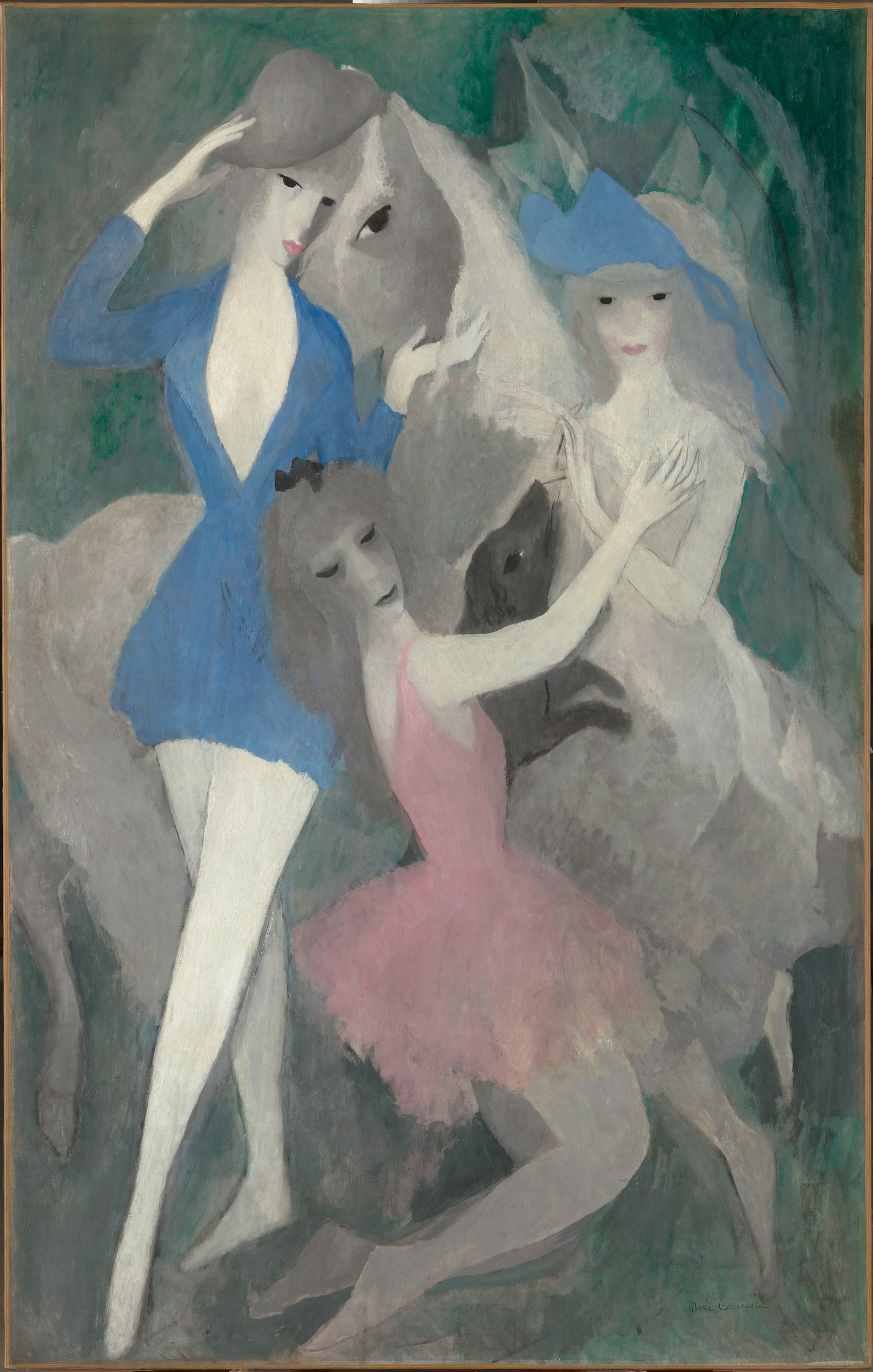Editor’s Note: Untold Art History investigates lesser-known stories in art, spotlighting unsung and pioneering artists you should know, as well as uncovering new insights into influential artworks that radically shift our understanding of them.
Marie Laurencin’s gauzy paintings have lived double lives over the past century. Rendered in soft pinks and grays, the French artist’s slender, sensuous figures were long viewed as coquettish and one-dimensional, despite the success she experienced in her lifetime. But Laurencin’s inclusion of enigmatic symbolism and intimate gestures — and near-complete exclusion of men in her work — point to something much more complex: the artist’s secret, queer world, cloaked in hyperfemininity.
A exhibition now showing at the Barnes Foundation in Philadelphia, titled “Marie Laurencin: Sapphic Paris,” brings attention to the artist, whose work is rarely shown in the US, and whose practice was deeply misunderstood while her peers — including Pablo Picasso and Georges Braque — led the dominant Cubist movement in the 1910s.
“Because she was a female artist working alongside these major male figures, she was always seen as an adjunct to what they were doing,” said Simonetta Fraquelli, one of the exhibition’s curators, in a video call with CNN.
“She was an anomaly. Her style didn’t look like anybody else’s,” Fraquelli continued, noting that this posed a challenge for art historians. “In this desire to put everybody into schools and everybody into movements, it was quite difficult to know where to fit her in.”
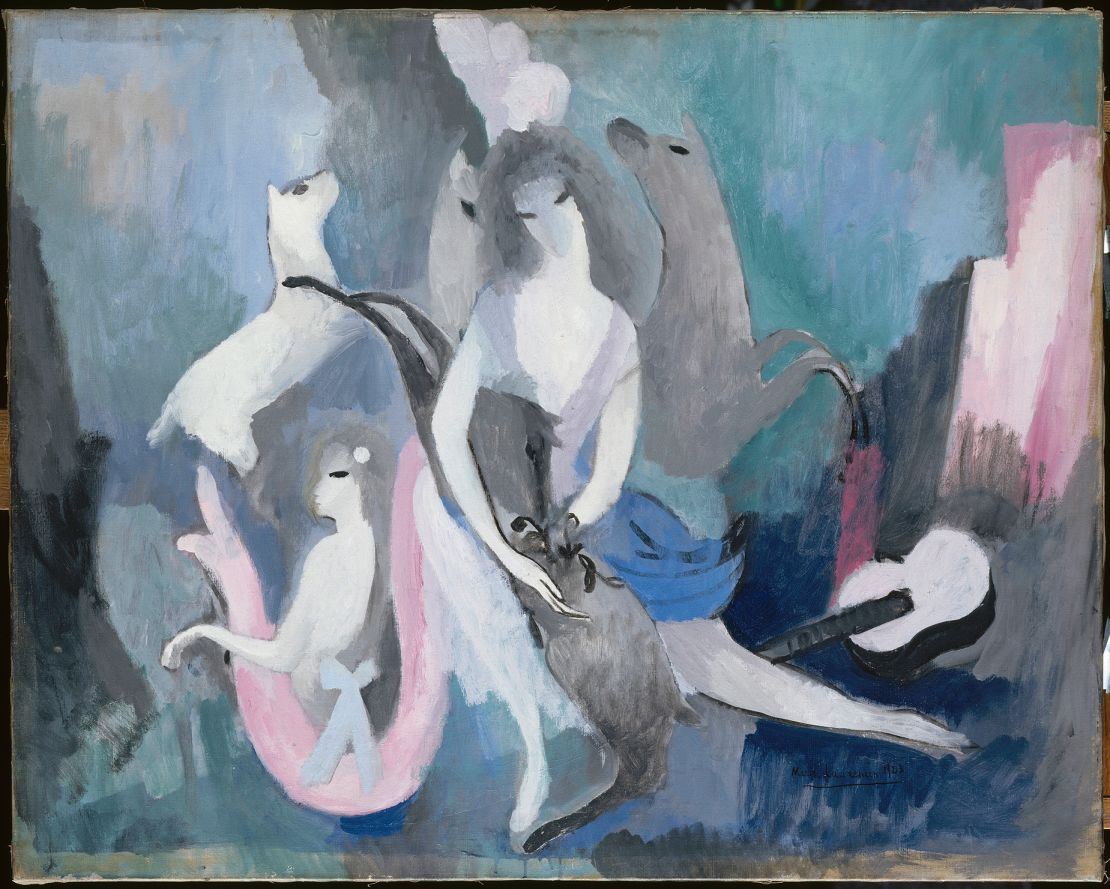
Though Laurencin toyed with the flat, fragmented planes of Cubism, she diverged from the movement after fleeing Paris during World War I for Spain, where her signature style began to “crystalize,” according to Cindy Kang, curator at the Barnes. She developed a soft, wispy style influenced by ballet and the decorative arts; her exposure to the work of Francisco Goya may have contributed to her moody shadows and her figures’ dark, deep-set eyes — their gazes grounding otherwise airy scenes.
“It’s a very dreamy figural world,” said Kang, who spoke to CNN alongside Fraquelli. “The women are diaphanous. — they aren’t very corporeal. You don’t get the sense of flesh; you get a sense of (them) dissolving into fabric.”
Paintings ‘devoid of men’
Prior to World War I, Laurencin studied drawing and porcelain painting before enrolling in the independent Parisian art school Académie Humbert, which was open to women in the afternoons, according to the Barnes’ exhibition catalog.
She was a polymath, illustrating books, writing poetry, and designing ballet costumes and theater sets. But as a female artist with a decidedly feminine style, she wasn’t always taken seriously, though she seemed to embrace a girlish, ditzy persona, once saying “it’s better to pass for stupid,” academic Rachel Silveri wrote in one of the catalog essays. (According to one account by the French bookseller Adrienne Monnier, who knew Laurencin, the artist proclaimed herself “the queen of airheads.”)
But as definitions of femininity have expanded in recent decades, so too has appreciation for Laurencin’s idyllic, women-only world. Early on in her painting career, Laurencin had included the occasional male figure in her work — Picasso, Jean Cocteau, the French art dealer Paul Rosenberg — but her compositions are largely “devoid of men,” Fraquelli explained. Instead, birds, dogs and horses pose and frolic with the women in her paintings, with her sitters including the fashion designer Coco Chanel and the socialite Maud “Emerald” Cunard.
In many cases, the animals were references to women in love, like the amorous lovebird in “Women with Dove” — a double portrait of Laurencin and the fashion designer Nicole Groult, who wrote poetry to her describing her eyes, breasts and lips as birds. She often titled her portraits of women “Friends” or “Two Friends,” leaving the exact nature of their intimacy unclear.
“It’s really an alternative vision of modernism. It’s almost like a radical utopia… a world of women, for women, by women,” Kang said. “It is a way of imagining a world where she, as a queer woman, could belong.”
Misunderstood intentions
Though Laurencin never explicitly discussed her sexuality, she can be firmly placed in the LGBTQ artistic circles of 1920s Paris and the sapphic salons of the American expat and heiress Natalie Clifford Barney. She was acquainted with the famed lesbian writer Gertrude Stein, who bought her work, and was photographed by Berenice Abbott, who captured the portraits of many important queer women of the era.
Laurencin married once, to the German artist Otto von Waetjen, and was known to have had romantic affairs with Groult and the poet Guillaume Apollinaire, among others. Later in her life, she adopted her partner Suzanne Moreau as her daughter — as many LGBTQ couples without legal rights did at the time — and lived with her until her death in 1956.
Understanding Laurencin’s visual lexicon has taken time — even for an expert such as Fraquelli, who said curating the show helped her better grasp the currents that ran through her work.
“There’s a sense of discovery of realizing who she was and understanding her further — I hope that comes out through the exhibition as well,” she said. “The way that she’s using her coded imagery was extremely sophisticated and clever.”
“She has that difficulty of interpretation,” Kang added. “Is she complicit with male stereotypes? Is she being subversive?”
In the past, Kang explained, even feminist art historians misunderstood her intentions. “If you’re not reading her from a queer feminine performative perspective, it is really hard to understand what it is she’s doing: why she’s so girly, why so much pink, why the ribbons. It’s easy to fall into the trap of thinking of her as just playing to a male audience.”
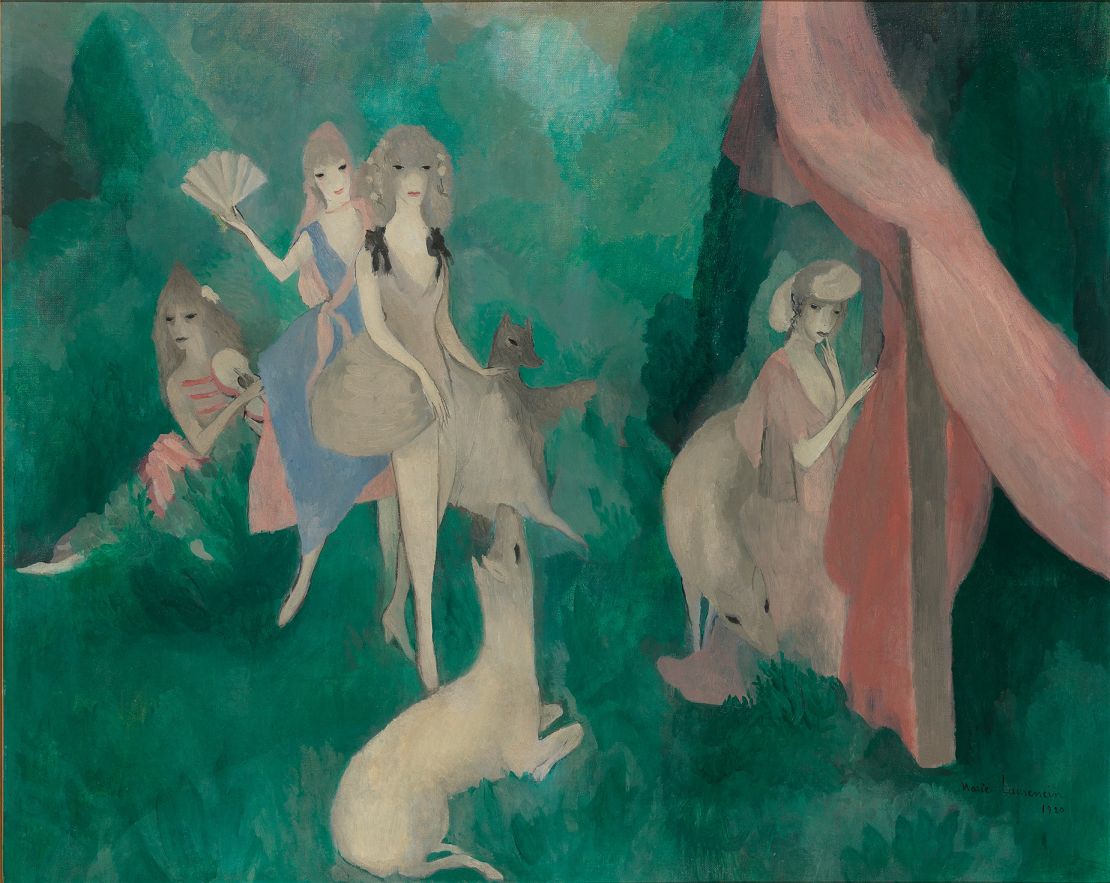
Laurencin was a complicated figure by today’s standards, and parts of her life are still not entirely understood, according to the exhibition’s curators. She felt a sense of otherness on account of her working class background and, possibly, her ethnicity — Laurencin believed herself to have Creole heritage, and reflected this in self-portraits (though genealogical evidence remains unconfirmed, according to the catalog). She also remained in Paris during World War II while many other artists fled, and some of her private writings from the time expressed support for Marshal Philippe Pétain, who helmed the collaborationist Vichy France regime during Nazi occupation.
While Laurencin’s work is known in her home country, the bulk of her oeuvre found an unexpected home in Japan. Moreau, her partner, kept much of her work until the end of her life, meaning few paintings were accessible to the public. In the 1970s, as pieces came to auction, the Japanese collector Masahiro Takano became her most ardent buyer, amassing hundreds of paintings and drawings. (Barnes’ founder Albert C. Barnes was also a collector of her work.) Takano’s collection served as the basis for the Marie Laurencin Museum, which first opened in Tateshina, a town in Japan’s Nagano prefecture, but relocated to Tokyo in 2017.
“One of the reasons why there hasn’t been an exhibition here (in the US) in over 30 years is that all the best work is in Tokyo… it is quite an investment to bring that work over,” Kang explained.
“It’s almost impossible to see the breadth of work that we’ve gathered,” she added of the collection on display in “Sapphic Paris.” “This is a once-in-a-blue moon opportunity here.”

